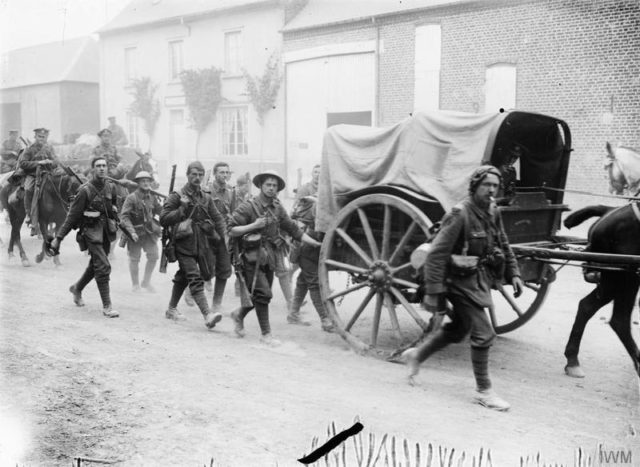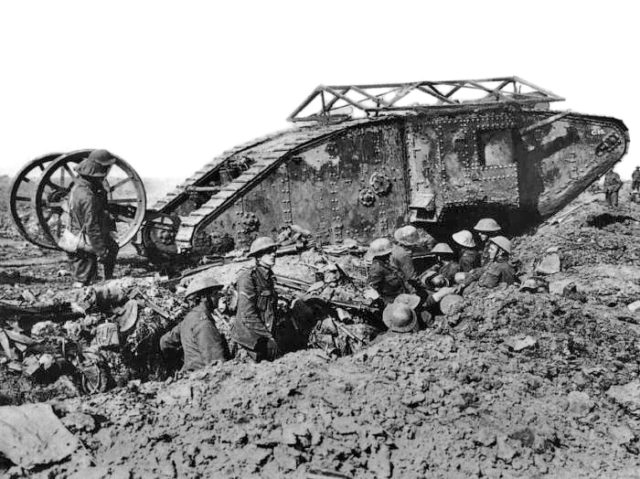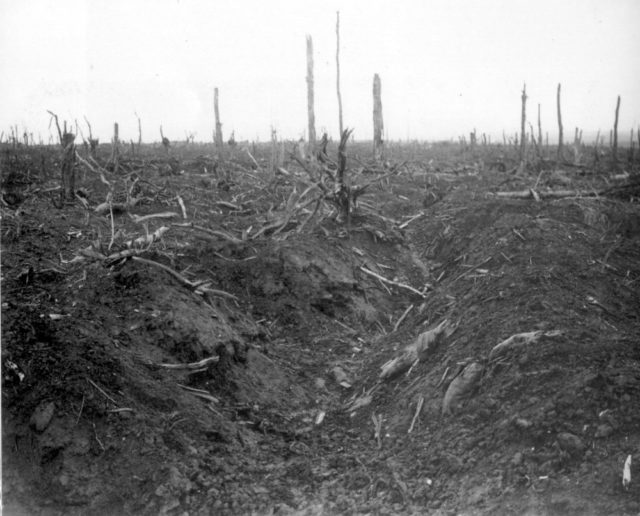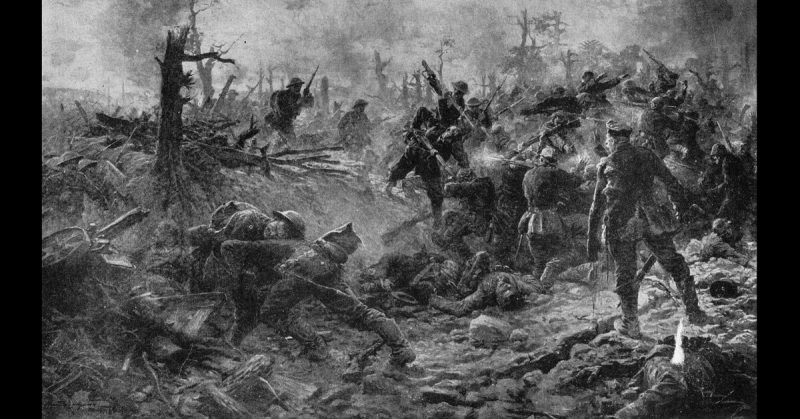In 1998 Richard van Emden’s book, Veterans: the Last Survivors of the Great War was published. Later it became the basis of a 2009 television documentary. Emden claimed that George Maher was the youngest British citizen to have served in WWI. The British government claimed it had found no records proving Emden’s assertion and insisted the youngest recruit they knew of was aged 15 or 16.
WWI broke out on July 28, 1914. Maher was born on May 20, 1903. When he turned up at his local recruitment office, he was 13 but claimed to be 18, a common practice at the time. He was accepted at his word – also a common practice by a military desperate for recruits.
Enlisting with the 2nd Battalion King’s Own Royal Lancaster Regiment, Maher was sent off to the front. During the heavy shelling, he started bawling and when brought before an officer revealed his real age. Unable to continue pretending they knew nothing about the children among them, the military rounded up Maher and some other boys and sent them back home.
Sidney George Lewis was born on March 24, 1903, in Tooting, London. By the time he was 12, he was a whopping 6’ 2” tall and was heavily built. The average height of a typical British adult male then was 5’ 2”. According to records, almost 40% of military recruits were rejected due to their poor state of health. Later that would have a significant impact on the nation’s health services.
To join the British army in the early 20th century, recruits had to be 18-years-old and stand at least 5’ 3” tall. When the 12-year-old Lewis turned up at the recruitment office and claimed to be 18, they believed him.

Lewis was placed with the East Surrey Regiment in August 1915 and joined the 106th Machine Gun Company of the Machine Gun Corps. His trial-by-fire began at the Battle of Delville Wood between July and September 1916. It was a subsidiary conflict of the larger Battle of the Somme which was the biggest and bloodiest conflict of WWI.
The Battle of Delville Wood was so brutal that the Allies called it “Devil’s Wood.” By the time it ended, not a single tree was left standing, and human skeletons are still being discovered today. The Allies wanted to push the Germans out of the area to end the war on the Western Front. They succeeded, but only up to a point.
The heavily wooded terrain rendered most military machines useless and required savage hand-to-hand combat. Removing the wounded was also a challenge, and many never made it back to the medical stations in time. Those who suffered the heaviest casualties were the South African Brigade – about 80% of their forces.

The Germans did not get off lightly, either. One officer wrote that the woods had “disintegrated into a shattered wasteland of shattered trees, charred and burning stumps, craters thick with mud and blood, and corpses, corpses everywhere. In places, they were piled four deep.”
At the peak of the battle, the Germans lobbed 400 shells a minute into the woods. Even after it ended in September 1916, the Allies and the Axis forces continued fighting until the Germans were finally cleared out for good in August 1918.
Lewis did not remain fighting in the war to its end. Neither did he break down bawling, as Maher had. Nor was he rounded up like the other boys and sent back home. It was not the military that discovered him. It was his mother.

One of Lewis’ friends and neighbors (who was of legal age) went home on leave and spilled the beans. Lewis’ mother then sent her son’s birth certificate to the War Office, demanding the immediate return of her son.
As to why she waited so long to do so is a matter of contention. According to Emden, most people in Britain did not realize how brutal warfare was and encouraged their sons to sign up in the belief it would “make a man” of them. Others were desperately poor and struggled to feed their families. Lewis was the youngest of seven children.
In a Britain that still practiced child labor, WWI served another purpose. For those fed up with the drudgery of low-paid factory work with long hours, war seemed a more exciting and better-paid option. It was no accident, therefore, that many signed up during their summer vacation, as Lewis did.
Whatever the case, Lewis was discharged and sent back home – complete with a Victory Medal and a British War Medal. In late 1918, the 16-year-old reenlisted and was assigned to Austria as part of the Allied occupying forces. He became a police officer after the war, then reenlisted in WWII to serve with the bomb disposal squad.
Lewis had a son, Colin, who never believed his father had served in WWI. The War Office had forgotten about its child soldiers – thought to have numbered in the thousands. On November 11, 2012, Remembrance Sunday, Britain remembered its war dead.
Colin saw a newspaper feature on WWI boy soldiers and recognized the picture of his father as a child. He then dug through the family files and contacted Emden, as well as the Imperial War Office. In November 2012, Private Lewis was declared as having been the youngest, authenticated soldier to have fought in WWI.
